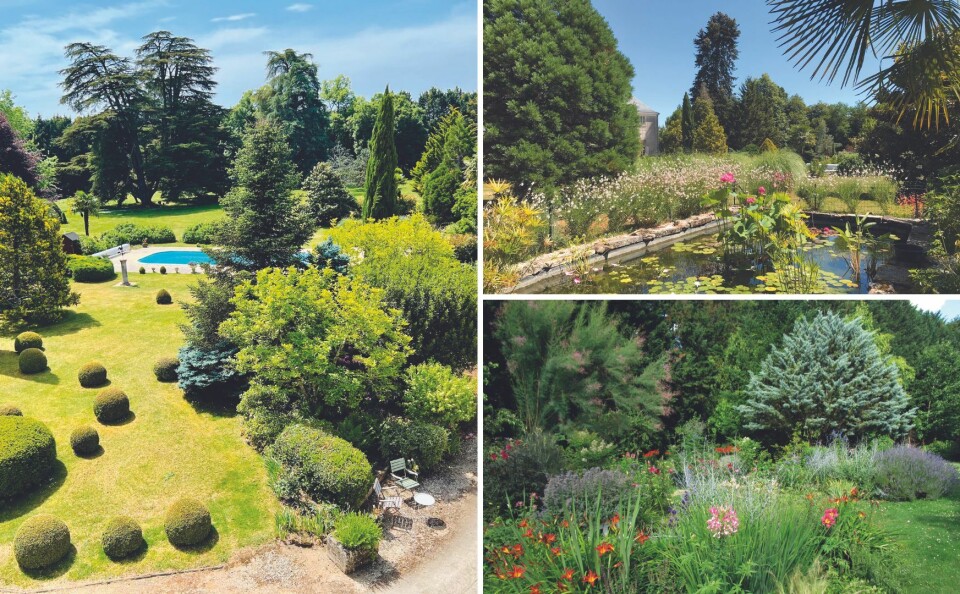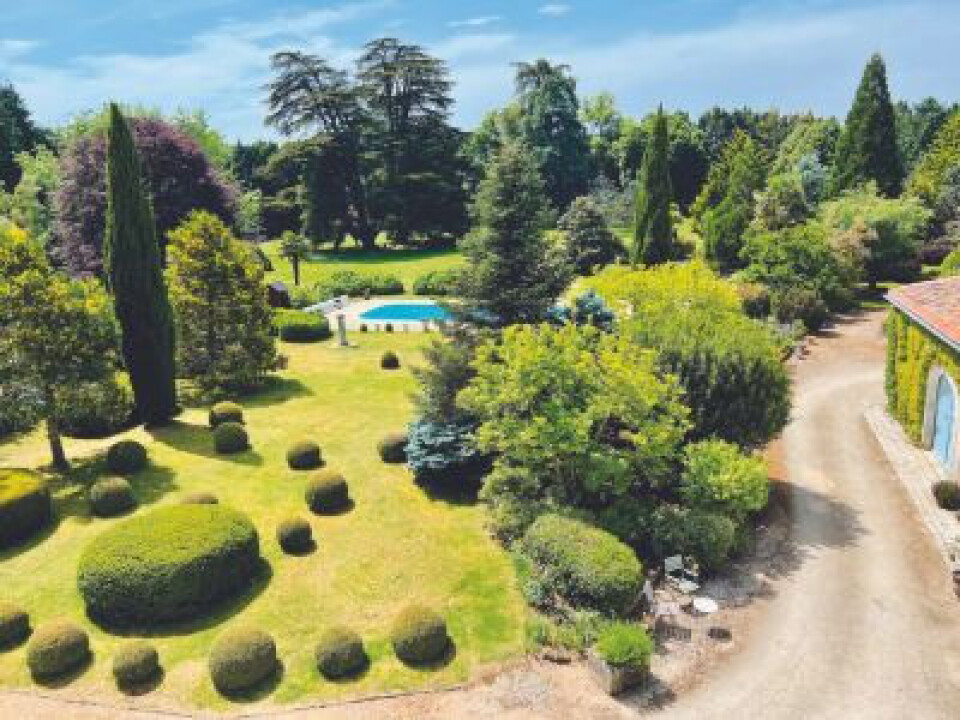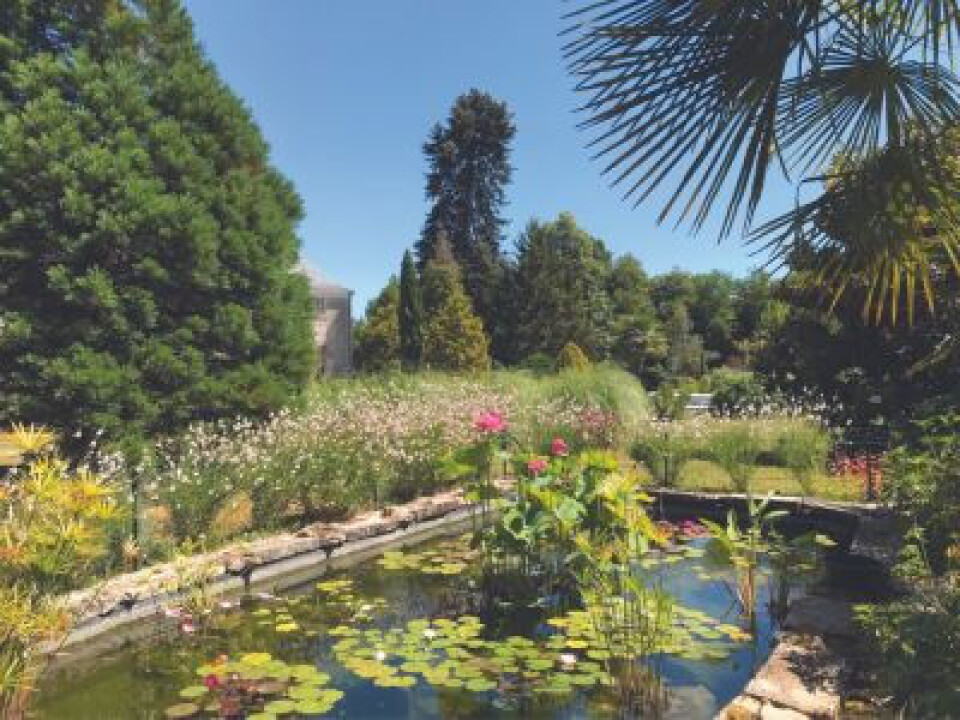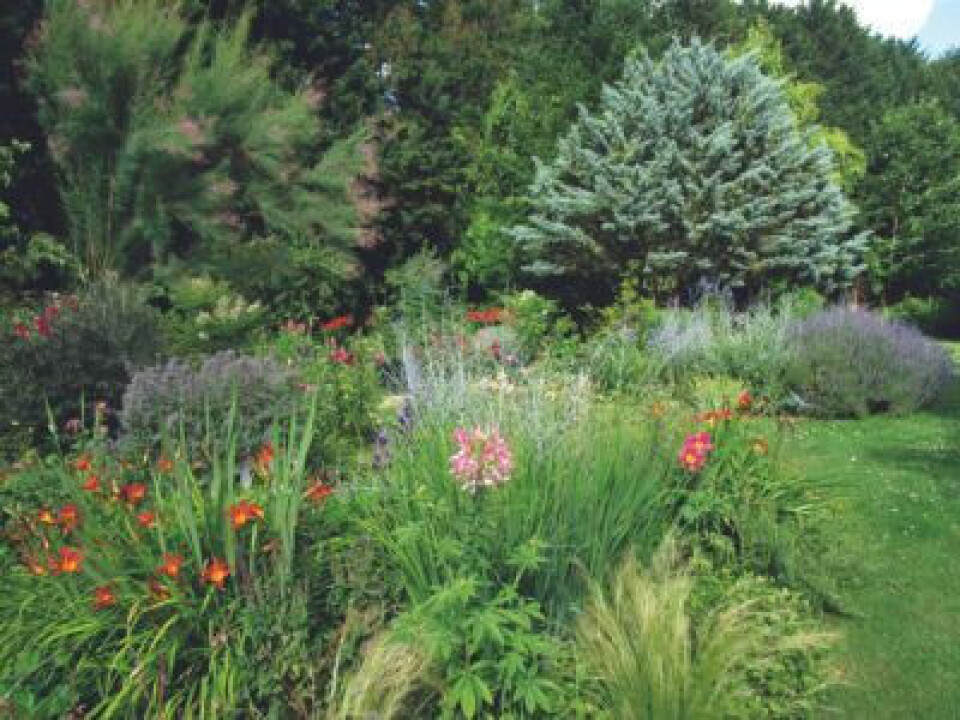-
What you should do to your garden in France in spring
Weeding, pruning, sowing, preparing the lawn…here is how to welcome sunnier days
-
Now is the time for people in France to ‘scarify’ their lawn
The practice, which should be done twice a year, enables the grass to thrive
-
Garden clearing obligations to be extended in south of France
Owners who fail to clear undergrowth face fines
Jardins Ouverts: Visit a Dordogne chateau and an English-style garden
Green-fingered enthusiasts are spoilt for choice this summer the Open Gardens scheme gives access to stunning gardens and their creators

This month we are lucky enough to be able to visit a couple of garden gems in the same Dordogne commune, courtesy of the Open Gardens scheme, which exists to raise money for children’s charities.
Chateau set in romantic landscape
Lasteyrie, the garden of Nigel and Fabienne Slater (1589 route de la Fontaine, 24340 La Rochebeaucourt-et-Argentine; Tel: 05 53 56 44 60; is open on Sunday 30 July, from 10:30 to 18:00.
The Slaters decided in 2015 to transfer their weddings and events business from the UK and, based on their previous experience, knew that a chateau setting in a historic and romantic landscape was essential to tempt potential clients.
The seven-hectare park at Laysterie was created in the nineteenth century and thus boasts a mature and traditional structure.
Fabienne recalls that, “in spite of the fact that it was a dull winter’s day, we were immediately taken by the park... the chateau is approached via a long private driveway lined by Leyland cypress and across an open parkland with a large collection of conifers, among them two magnificent century-old Lebanese cedars.
“As you continue to follow the track, more fir trees hide the view until finally the house appears, dominated by a giant Abies alba... Many visits later, we were still in awe of the place and it had won our heart over other contenders.”

Photo: Open parkland at Laysterie with a large collection of conifers; Credit: Nigel and Fabienne Slater
Struggling trees replaced with drought-tolerant varieties
With a series of careful custodians, including the Slaters, Laysterie has had a lucky history and the landscape has been maintained and treasured, particularly in the 1990s, when a good deal of landscaping work was carried out.
However, as with all mature gardens, there have been losses and necessary replacements. A situation aggravated by the increasingly dry summer climate.
The conifers in particular have struggled with drought and Fabienne comments: “We’ve tried new species. Some, such as holm oak [Quercus ilex] and a cherry tree, with great success, some not quite so successfully.
“The main difficulty is that winters in the Périgord can still be frosty and Mediterranean flora is not always adapted.”
Read more: French garden diary: New roses bred for resistance
Box hedging and topiary need regular care
One of the most striking features about this style of French garden is, of course, the plantings of box and topiary specimens.
The Slaters do have help trimming the box hedges, a task carried out twice a year to keep them absolutely immaculate.
And, as with many other gardens, control of the box tree moth caterpillar has added hours to garden maintenance, with plants checked regularly during peak outbreak times and immediate spraying with Bacillus thuringiensis if there is any sign of caterpillars.
Weed clearing revealed pond and waterfall
In the course of a July walk through the garden, you will discover a rose garden, orchard, potager and pond, the latter being the Slaters’ pride and joy.

Photo: Pond plants come from nursery that inspired Claude Monet; Credit: Nigel and Fabienne Slater
Fabienne says: “It came to life rather unexpectedly, as we decided one day to clear an area full of brambles, revealing a concrete basin and a stone waterfall hidden under the overgrown bushes. We immediately saw the opportunity and started to work on the project.
“It is now populated with comet and shubunkin goldfish swimming around the amazing assortment of hardy water lilies and the sacred lotus, Nelumbo nucifera.”
Bagpiper to play on open day
All the aquatic plants have come from Latour-Marliac, the oldest nursery of this kind in the world, which inspired the famous French painter Claude Monet.
There are ten varieties of waterlily, carefully chosen for their colour (such as ‘Almost Black’ and ‘Siam Purple’) or their rarity, such as ‘Ziyu’.
Fabienne finds the waterlilies satisfying to propagate: “They need to be divided every two or three years and the leftover roots regrow quite easily. If available at the time we are open for Open Gardens, visitors can buy them!”
As an added draw to the garden, at 14:30 on 30 July, Jean-Pierre Faure, member of the Scottish pipe band Saor Alba Pipe & Drums will play the bagpipes.
Read more: Where some of world’s best-known artists found inspiration in France
Atmosphere of an English garden
Nearby, the garden of Marie-Odile LeFranc (Le Châtenet, 24340 La Rochebeaucourt-et-Argentine; Tel: 06 15 96 27 13) is open from 10:00 to 18:00 on the same day (Sunday 30 July).
This site of 45 hectares was previously an apple orchard and chosen by Marie-Odile in pursuit of her career as an arboriculturist, but there was nothing but nettles and brambles around the house itself when she and her husband first arrived.
She quickly began to plant ornamental trees, shrubs and herbaceous borders, creating the ‘gardened’ hectare that visitors enjoy.

Photo: Nettles and brambles replaced by herbaceous borders; Credit: Marie-Odile LeFranc
Green and soft colours favoured by English gardeners
Unlike many French people, she does not believe that ‘garden’ should mean ‘vegetable garden’ and her ornamental plantings lean, she says, towards the English style of garden.
“The English go for green and soft colours in the garden; the French like vibrant, sometimes aggressive, shades.”
Now, although Marie-Odile’s garden was begun over 20 years ago, she feels as if it has quite simply ‘always’ been there. And she is always very appreciative when visitors comment that she has recreated the atmosphere of an English garden.
Careful use of water and mulching
The soil in the garden is both a blessing and a problem. It can be worked at any time but increasing periods of drought make irrigation essential.
Fortunately, there is a well on the property that never runs dry and a micro-irrigation system has been installed everywhere, even in the orchard.
Careful collection of roof runoff water and mulching throughout also helps to maintain the fresh look.
Read more: Practical tips for buying rainwater collector as sales surge in France
Poly-tunnel helps with cut flowers
The aim in this garden is to have flowers all year round. Even in winter, the polythene tunnel is burgeoning with growth, as Marie-Odile uses it to protect perennials in pots, and bulbs and tubers such as tulips, anemones and Ranunculus, in order to have flowers from the beginning of March.
This is also where she starts off her young plants for producing cut flowers at the beginning of April.
Marie-Odile has continued to open in support of Open Gardens since 2015, even in this rather difficult year, during which she and her husband are in the process of moving house.
Temporarily that complicates life, since effectively she is now gardening in two places!
But she says that, aside from gardening journals, private gardens opened generously by fellow members of the Open Gardens association have continued to provide her with inspiration over the years.
“I was immediately seduced by the initiative!” As a result, she feels it important to offer other gardeners the same opportunity.
Check www.opengardens.eu regularly for more gardens to visit; at this time of year there are additions every week.
Related articles
Homemade garden fire protection system in France
Can we decorate our French balcony with plant pots?
Can you mow your lawn on a bank holiday in France?
























